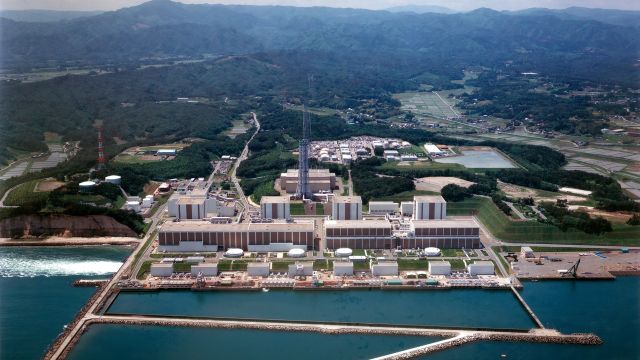
When things get serious - Germany's INES officer interviewed on the nuclear accident at Fukushima
You were on duty at the GRS emergency centre immediately after the nuclear accident at Fukushima. How did you hear about the accident?
I was in the car in the commuter car park, listening to the radio news at 6:25 that morning . There was talk of the massive earthquake and the impending tsunami. When I arrived at GRS at 7:30, I read the news and heard about Fukushima.
When was it clear that the incident would develop into a serious accident?
That was clear to us very quickly. We were fairly certain about it at around 9 a.m. our time, after I had spoken to a Japanese colleague on the phone. He confirmed the failures of all systems, including the safety systems. From that point on, we knew that in addition to the external power grid, the emergency diesels in the power plant and the DC power supply via the batteries had also failed. We knew then that things were getting really serious.
Would there have been any measures that could have prevented a core meltdown? If so, which ones?
This is difficult to say even after such a long time and so many analyses because one cannot comprehend the stress and the organisational options that the staff had at their disposal. The only certainty is that Units 2 and 3 could possibly have been saved if Unit 1 had not exploded or had exploded only a few hours later. TEPCO staff were in the process of laying the appropriate water pipes to cool the two reactors. But after the explosion of Unit 1, some areas around the reactors were no longer accessible.
What happened next for you and your colleagues at GRS?
We sat down with our experts in the morning, as we were aware that this was a particularly serious accident. At lunchtime, we moved together to our emergency room and spent the next few days and weeks there almost 24/7. Here we gathered all the information about the accident and the plants to understand exactly what was happening at Fukushima. Our main task was to inform the Federal Ministry for the Environment and thus also the Federal Government. For this purpose, we prepared several situation reports each day. At the same time, GRS also made great efforts to inform the public and journalists in a timely manner.
Is there a moment or a particular experience from those days that has particularly stayed in your memory?
I can still remember the first few days very clearly. One thing is how a colleague who calculates the behaviour of reactors after severe accidents told me at around 2 p.m. on 11 March 2011 that the reactor core in Unit 1 had probably melted. This is the expected course of an accident if core cooling fails for a long time. This was one of the things that you didn't want to hear, but the technical analysis defeated hope.
I also found the ARD Morning Magazine's live reporting from our emergency room on the Monday after the accident interesting. There was no better way to show the public our work at GRS.
As INES officer, you are involved in the classification of nuclear incidents and accidents on the INES scale. The accident at Fukushima was initially classified at level 3 as a "serious incident" and later upgraded to the highest level 7 as a "major accident". How did this come about?
The colleagues from the Japanese supervisory authority followed the wording of the INES manual exactly, that a classification should only be made after the event. I did not stick to the INES manual in interviews at the time, as it was obvious that the classification given was not correct. In the next edition of the INES manual, which will probably be published this year, the classification for events that are still ongoing will be revised.
Has the accident at Fukushima left any marks in the sense of "lessons learned" - at GRS and also in general?
The accident triggered reviews of nuclear power plants around the world. The result is a number of improvements in the prevention and mitigation of severe accidents at nuclear power plants. Germany was the pioneer of these measures, significantly influencing and accelerating the reviews in the EU and then also outside the EU with its investigations, which became known to the public as stress tests.
For us at GRS, too, many things changed afterwards. Although we mastered the situation after the accident with a lot of dedication, points were nevertheless also identified that needed to be improved. The rooms for the emergency centre proved to be too small and technically no longer adequately equipped for such a large and long-lasting emergency. Shortly afterwards, we therefore set up a new, modern emergency centre on our premises, with more space and its own emergency power supply. At the same time, we worked on further expanding our database on foreign plants in order to be able to make initial assessments as quickly as possible in an emergency.
Thank you very much for the interview, Dr Maqua!